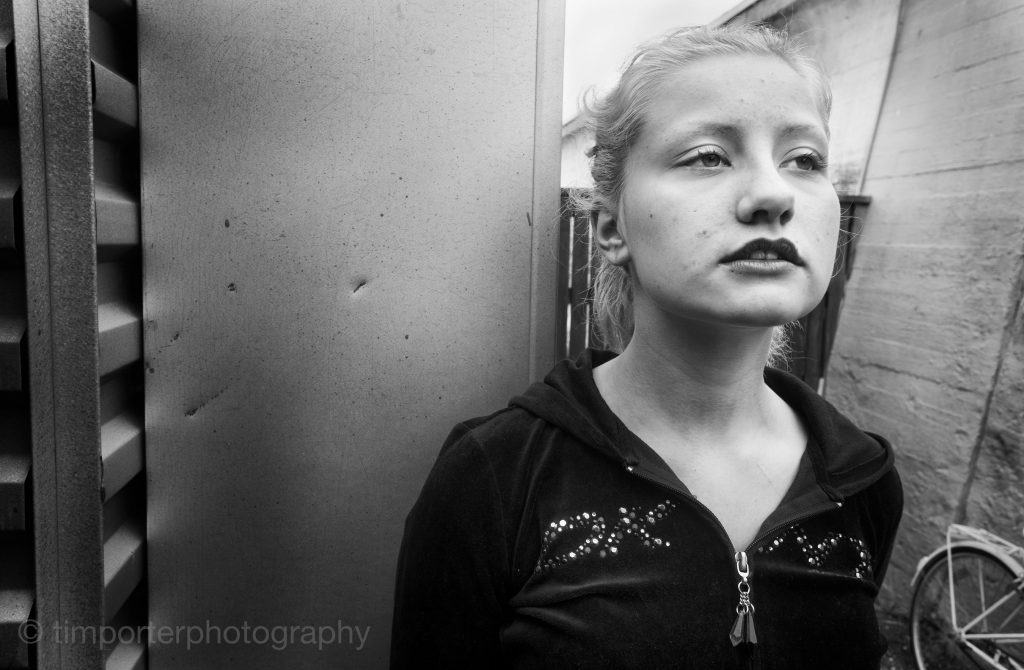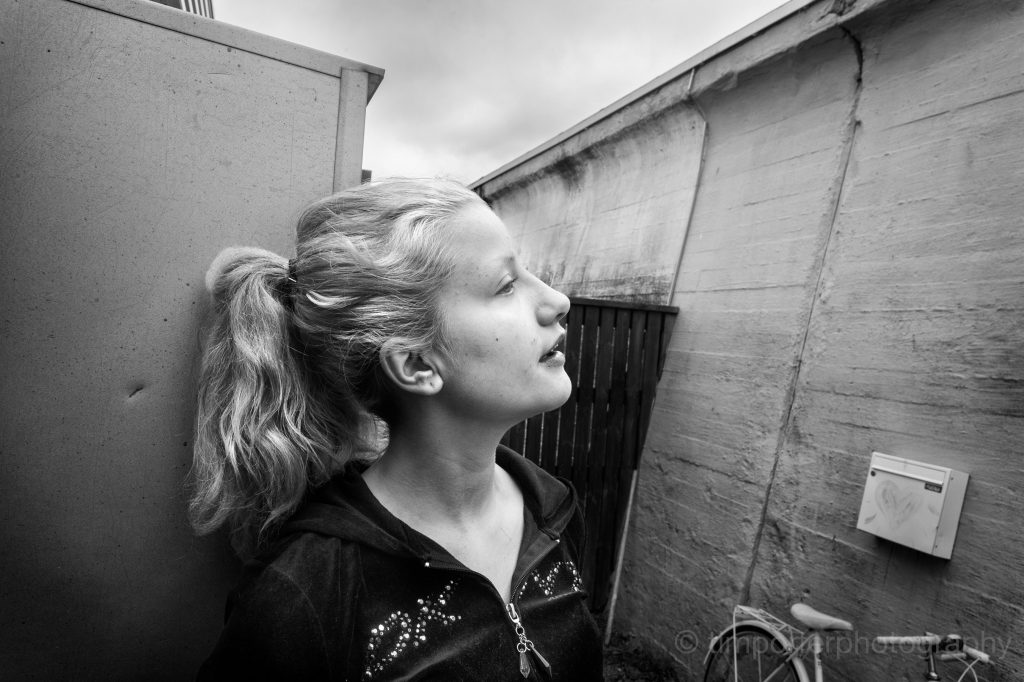
Helena was a heroin addict who lived in a modified shipping container in Reykjavik, Iceland. I met her some years ago while photographing folks who lived on the fringes of the country’s overly orderly society.
As most Islanders do, she spoke English, but her accent was American, a gift from her father, with whom she’d lived for a while in San Diego, California. The details of our conversation elude me because I was making photos as we talked, but I do know she spoke about the beach and the Southern California warmth and her hope of returning someday.
As you see, Helena had an open, adolescent face, one dotted with acne, anchored by a strong nose and adorned with large green eyes that alternated between lively and vacant. Atop her head was an unruly collage of yellow and orange hair going dark at the roots. What the photos don’t show is how Helena moved constantly as she talked: her arms intertwining around the torso, her hips arcing left and right, her waist bending forward, each motion a nervous punctuation. She smiled readily, then frowned just as quickly, displays of emotions in motion. She posed for camera at times, imitating what she’d seen, but she couldn’t sustain the façade.
I’m not sure Helena ever understood or cared why I was there, not that it mattered. For her, I was a diversion. After that hour, I never saw her again nor do I know what became of her. I could find out without much difficulty, I suppose, but I’m not sure I want to. Most young drug addicts face hard futures. Once people are broken, it’s hard to put them back together.
For me, what remains of Helena are the images. This is what photography does: preserves a micro-moment, and an incomplete one at that. The image lacks sound and movement, and any emotion it might convey is second-hand at best. What was seen is all there is.

